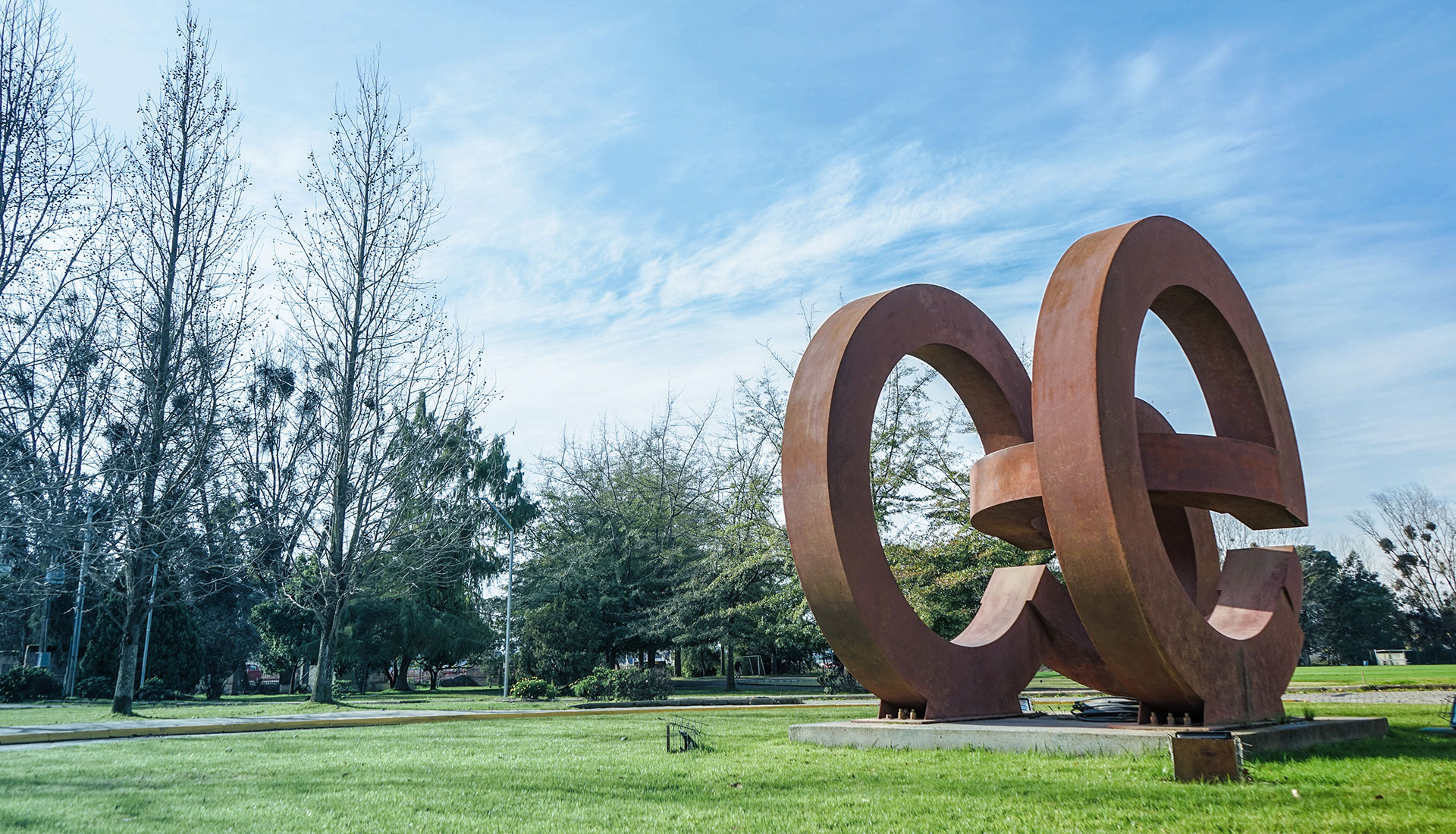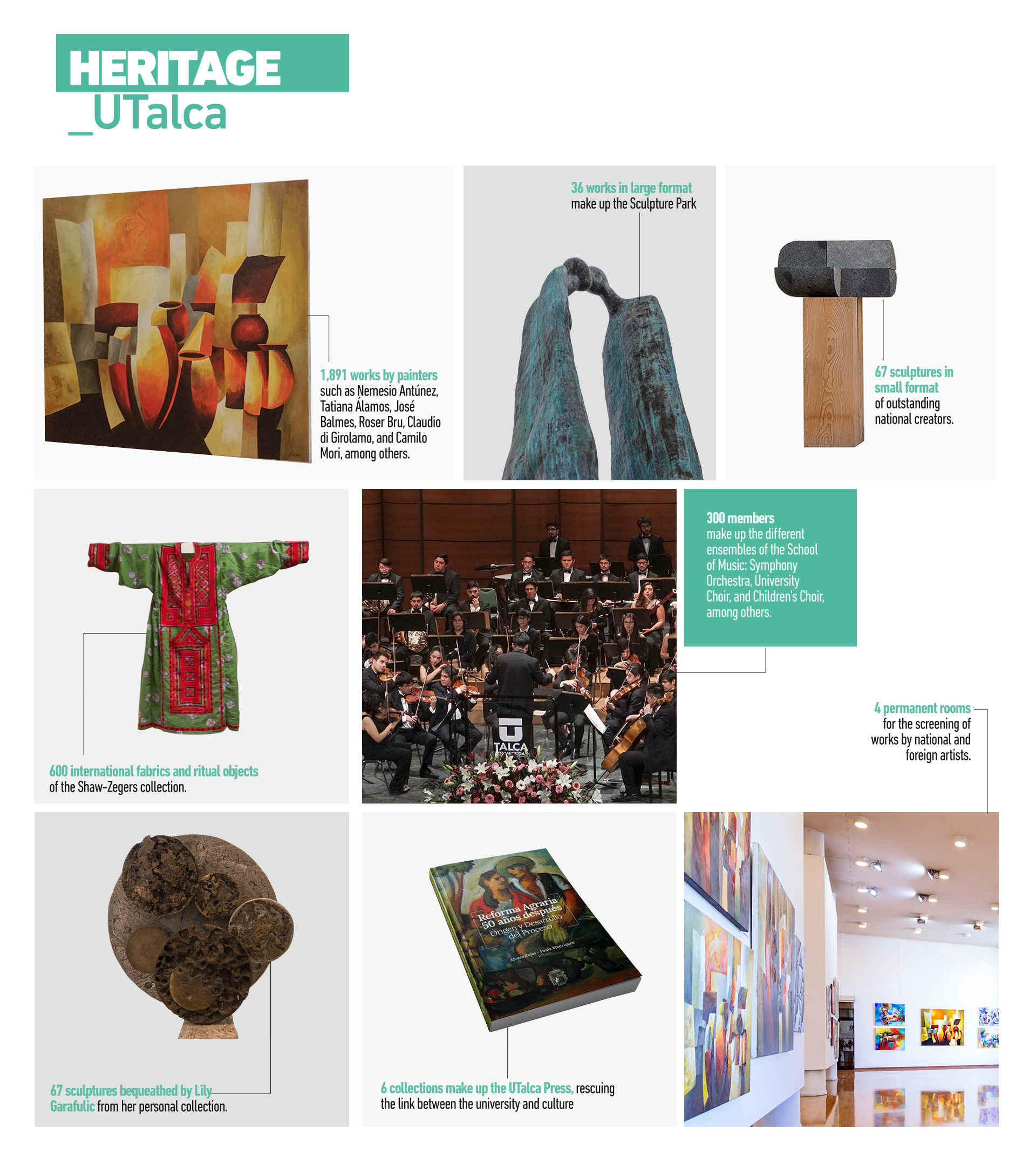Cargando 0%
Cargando 0%
The Institution took on another challenge: To break with the centralism that has concentrated in the metropolis the main cultural assets of the country
28 Junio 2019
More than 2,000 works make up the cultural heritage of the University of Talca and all of them are available to be appreciated by the entire community. They include paintings by Nemesio Antúnez, José Balmes, Roser Bru, Pedro Lira, Juan Francisco González, and Manuel Antonio Caro; sculptures by Federico Assler, Marta Colvin, Waldemar Otto, Mario Irarrázabal, Francisco Gazitúa, and José Vicente Gajardo; and a series of murals and friezes by Hugo Marín, Rodolfo Opazo, and Matilde Pérez.
The Sculpture Park, the NUGA art gallery, and six other rooms are open to the public, throughout the year, as part of the University’s efforts to create a space to highlight the work of the national and international creators.
“This is a University conceived from the humanist perspective, which yearns to live the experience of the art not as an act of contemplation, but as a path that leads to greater sensibility and to awaken the creativity of our youth,” expressed the Rector of UTalca, Álvaro Rojas.
Based on this conviction, the Institution took on another challenge: To break with the centralism that has concentrated in the metropolis the main cultural assets of the country. As a result of its perseverance and commitment, UTalca is now recognized in all areas as a benchmark for arts and culture, to the extent that the O’Higginian Museum of Fine Arts of Talca has just loaned the University two famous murals by Laureano Guevara and Arturo Gordon that were made for the Ibero-American Exposition of Seville in 1929.

‘Talca Model’
The ‘Talca model’ was the concept that visual artist Alfredo Jaar used to define the University of Talca’s track record in the field of culture over the last three decades. This attribute has become its hallmark, so much so that it not only maintains an active policy of cultural dissemination, but it also incorporated artistic sensibility among the values that it seeks to pass on to its students.
The system he referred to is palpable at all the UTalca campuses, a reality that led sculptress Lily Garafulic to donate a significant part of the works of her private collection to the Institution, just as other renowned artists have done. In the literary arena, the contribution made by the University is also recognized, as expressed by the winner of the 2017 Cervantes Prize, Sergio Ramírez.
“It seems of the utmost importance for a university to open its doors to culture, not only to the Chilean culture, but also to Spanish-American culture,” he said when he obtained the José Donoso Ibero-American Literature Prize awarded by the University since 2001, under the auspices of Banco Santander.
The efforts of the UTalca to value heritage are also visible through the awarding of distinctions such as the Abate Juan Ignacio Molina Medal of Merit, whose last winner, National Humanities and Social Sciences Prize Winner, Sonia Montecino, described as “an honor, because it also represents a recognition to the women who have dedicated ourselves to learn about our history, our demands, and, also, the contribution we have made to culture.”
Galería de Imágenes